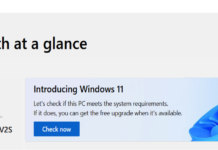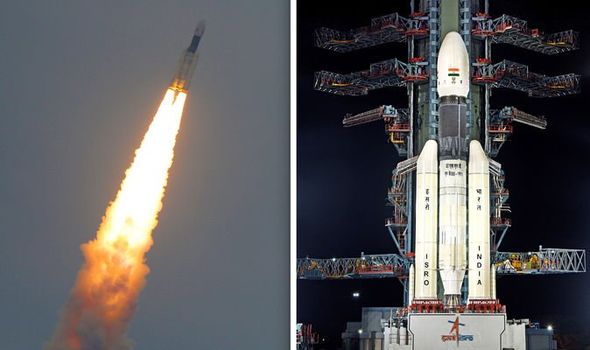Chandrayaan-2 is India’s second lunar exploration mission after Chandrayaan-1 developed by the Indian Space Research Organization (ISRO). It is a follow-up mission from the Chandrayaan-1 mission that assisted in confirming the presence of water/hydroxyl on the moon in 2009. Chandrayaan-2 launch was first scheduled for 14th July 2019, with the expected landing on 6th September 2019. However, the launch was called off due to a technical problem and then finally launched successfully on 22 July 2019. The main scientific objective of this mission is to map the location and abundance of lunar water.
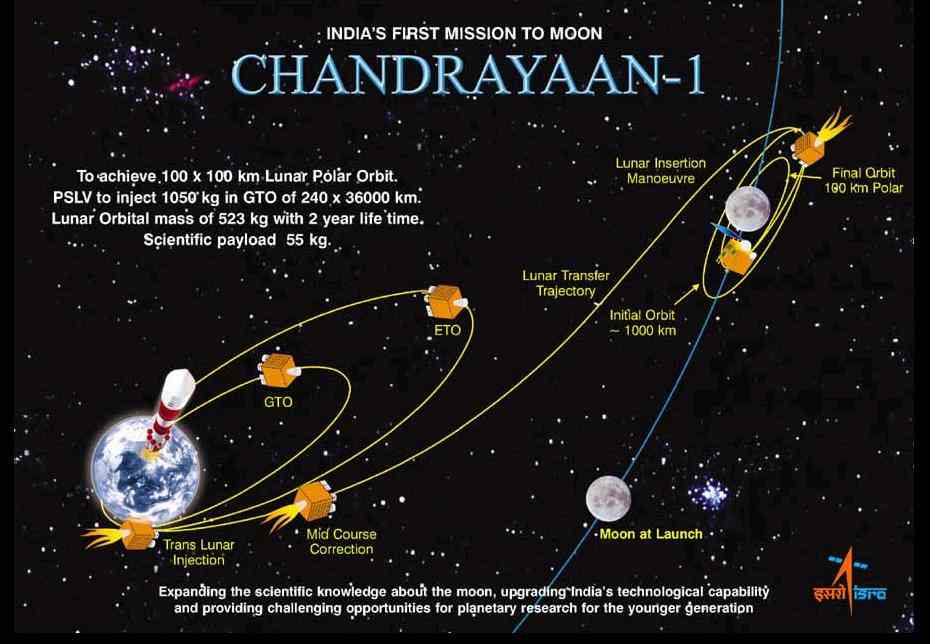
Table of Contents
Struggles faced for launching Chandrayaan-2
On November 12, 2007, Russian Federal Space Agency (Roscosmos) and ISRO signed an agreement to work together on Chandrayaan-2 project. Although ISRO finalized the payload for Chandrayaan-2 as per the schedule, the mission was postponed in January 2013 and rescheduled to 2016 because Russia was unable to develop the lander on time. Roscosmos later withdrew in wake of the failure of the Fobos-Grunt mission to mars, as the technical aspects connected with the Fobos-Grunt mission were also used in lunar projects, which needed to be reviewed. Then India decided to develop the lunar mission independently. Many schedules were delayed due to some technical issues and then pushed the launch to the first half of 2019. Again, two of the lander’s legs got minor damage during one of the tests in Feb 2019.
Chandrayaan-2 Scientific Objectives
The main objectives of the Chandrayaan-2 mission are to show the ability to soft-landing on the lunar surface and then run a robotic rover on the surface. The main scientific goals include the studies of lunar topography, mineralogy, elemental abundance, the lunar exosphere and the signatures of hydroxyl and water ice. The orbiter will map the surface while studying the water ice in the South Polar Region and thickness of the lunar regolith on the surface. Chandrayan-2 will give updates about the location and abundance of lunar water for the utilization and development by the future lunar base proposed by the Artemis program.
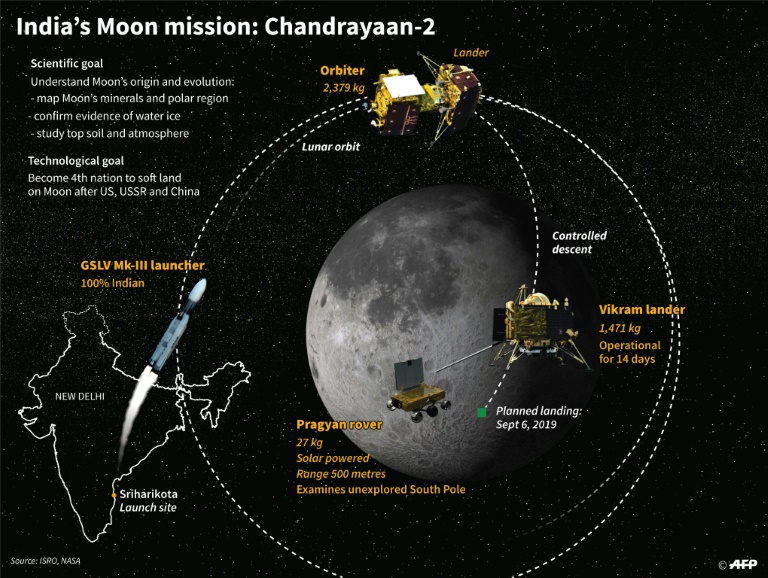
Highlights
India has achieved a major achievement with the chandrayaan-2 launch. As it is the first time any country is attempting to reach the moon’s South Pole. And also, the news was covered by all well-known media houses of the world.
About Chandrayaan-2 Mission
Chandrayaan 2 is a totally indigenous mission acknowledged with heavy participation from the private sector at an estimated cost of Rs 603 cr for the spacecraft systems and then Rs 375 cr for the launcher GSLV MK-III. Scheduled to lift off from Satish Dhawan Space Center at 0251 hrs IST on 15 July, also the mission will convey three primary payloads – the orbiter, the Vikram lander, and the Pragyan rover. However, these payloads are designed to complete trials that include mapping the outside of Moon, minerals, chemical composition, detecting water molecules, and rock formations among others.
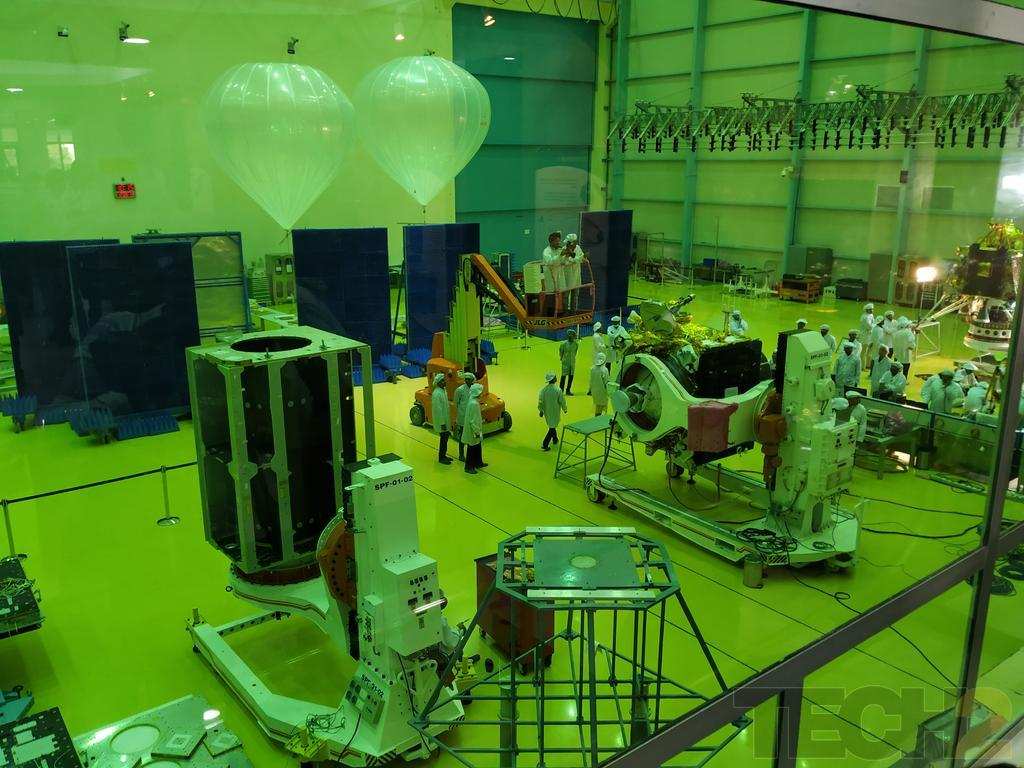
However, close by the curiosity and scientific accomplishment, the Chandrayaan 2, Dr K Sivan, Chairman, Indian Space Research Organization (ISRO), says, “Will foster a new age of discovery, increase our understanding of space, promote more global alliances, stimulate advancement of technology and grow commercial opportunities in India and inspire future generations”. Also, the mission will showcase the soft power of Indian space prowess which is probably going to spark unparalleled nationwide enthusiasm for science and innovation.
Chandrayaan-2: Befitting centenary tribute to Dr. Vikram Sarabhai
The achievement of Chandrayaan 2 will be a befitting centenary tribute to its founder, Dr. Vikram Sarabhai, who visualized harnessing the power of space science to discover answers for the issues India was looking in the field of communication, meteorology, and also education.
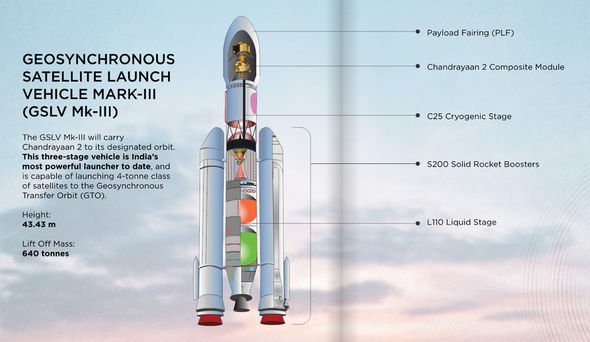
Confronting numerous triumphs and tribulations, consistent with Sarabhai’s vision, ISRO has made some amazing progress from an unassuming start of transporting space components on bullock carts, launching sounding rockets, starting Satellite Instruction Television Experiment (SITE) program, to launching its first Aryabhata satellite (locally available the Soviet launch vehicle) to the current period where ISRO creates, builds and launches gigantic PSLV and GSLV rockets, which convey Indian and worldwide payloads, satellites, and complex spacecraft. Projects like the Chandrayaan, Mangalyaan, worked at cheap costs, represent indigenous greatness in space advancements as well as ignite an outstanding feeling of Indianness among the general population and motivate youths to take to science.
Chandrayan-2: An Innovative Success
The slow, round-about route that Chandrayaan-2 will follow to achieve the moon reflects the intensity of the Indian rocket used to launch the spacecraft, called the Geosynchronous Satellite Launch Vehicle Mark-III. So Chandrayaan-2 was constantly scheduled to spend some time orbiting Earth before moving to lunar orbit. After the launch delay a week ago, engineers at the Indian Space Research Organization (ISRO), which oversees the mission, balanced the mission course of events to guarantee the landing schedule wouldn’t be seriously affected.
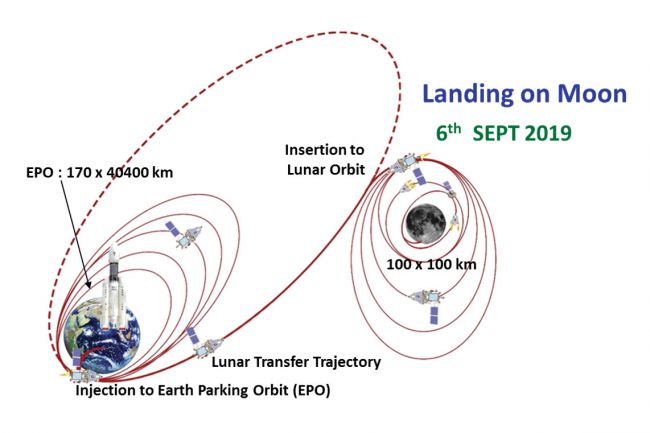
New schedule
As indicated by the mission’s new schedule, Chandrayaan-2 will spend 23 days orbiting Earth, bit by bit raising its altitude on one side of an elliptical orbit around the planet. Then, in mid-August, it will turn its sights on the moon, finishing a series of moves to leave Earth orbit and start circling the moon.
During the principal seven day stretch of September, the Chandrayaan-2 orbiter will release its Vikram lander, which will then descend to the surface, touching down slightly later than the mission’s unique timetable called for. In the event that all goes well, a rover called Pragyan will then be deployed from the lander a couple of hours after the fact.
At the point when Vikram lander lands, it will do as such close to the moon’s south pole, a region of particular interest to scientists and explorers on account of its reserve of water ice in forever concealed holes. A few of the payloads locally available both the lander and its companion rover designed to map and analyze this ice.
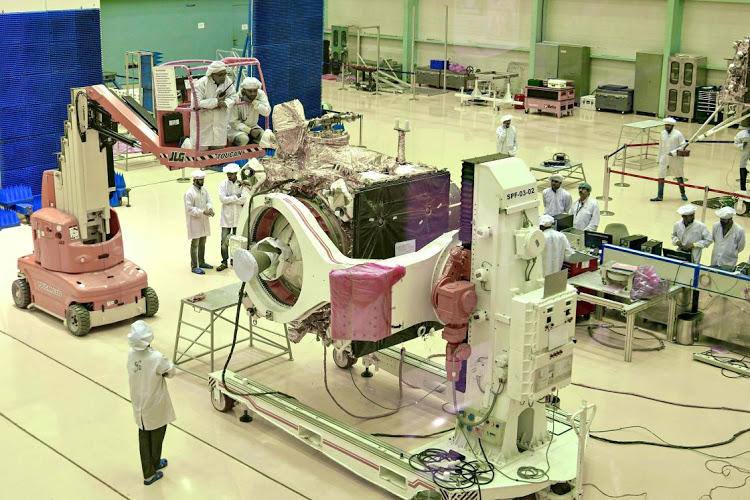
The Chandrayaan-2 Team
Below lists are the most Instrumental scientists and engineers who were the key to the development of Chandrayaan-2 projects:
- Muthaya Vanitha – Project Director, Chandrayaan-2
- Ritu Karidhal – Mission Director, Chandrayaan-2
- Chandrakanta Kumar – Deputy Project Director, Chandrayaan-2
Conclusion
Finally, if Chandrayaan-2’s flight and landing go easily, India will turn into the first country to achieve the moon’s the South Pole and just the fourth nation to effectively land softly on the moon, after the former Soviet Union, the United States, and China.













